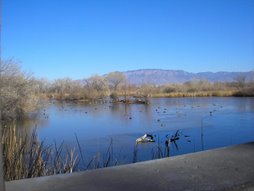I've been reading Water, the Fate of Our Most Precious Resource, by Marq de Villiers (c2000, ISBN0-618-03009-3).
In the chapter on irrigation, de Villiers discusses the growing salinity of the soil and indicates that the American Southwest is an area vulnerable to saline degradation. "It is where irrigation is intensive, the soils naturally poor, and the drainage either inadequate or nonexistent that the most serious problems will occur. The American West . . . is the most notorious example." (p143) In the Imperial Valley in California this is beginning to render the farmland unusable.
Then he mentions the geothermal aquifer beneath the Imperial Valley:
"Water temperatures in the huge underground pool rise as high as 280C. Researchers are developing methods to use the steaming brine to generate electrical power. They believe it is feasible that the clean wastewater produced by a power plant could be used to dilute the salty water in the fields." (p140)
The above is an example of how to take advantage of the energy-water nexus.
Later, he talks about methods for preventing saline buildup in the soil:
"But what can be done? More efficient irrigation would help -- the large-scale application of the methods my grandfather had worked out intuitively. The Israelis, always searching for better techniques, have improved efficiencies sixfold by using laser technology to get fields absolutely level, and by reusing surplus water from one crop on other, more salt-resistant crops. Israeli water engineers have taken "water stress management" of crops to a high art, and water only when necessary." (p144)
Perhaps this is incentive for Southwest American farmers to invest in laser-levelling, even though it may reduce the amount of water they put to beneficial use, it can also preserve their soils so they remain productive over a longer time-frame.
Subscribe to:
Post Comments (Atom)

No comments:
Post a Comment